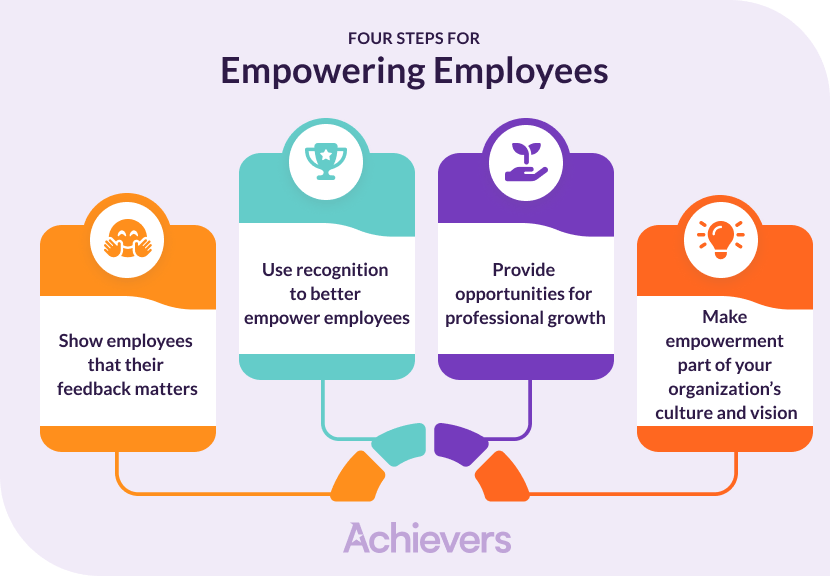
Empowerment in the Workplace
Empowerment in the workplace refers to the process of enabling employees to take ownership of their work and contribute to meaningful decision-making. This concept has been extensively researched, and studies have shown that empowered employees are more engaged, motivated, and productive.[1]
Benefits of Employee Empowerment
The benefits of employee empowerment are numerous. Research has demonstrated that empowered employees are more likely to be motivated, satisfied, and committed to the organization.[2] In fact, a study of over 7,000 employees found that those who felt empowered ranked in the 79th percentile for engagement, while those who didn't feel empowered landed at just the 24th percentile.[3]
Components of Employee Empowerment
There are several key components of employee empowerment, including autonomy, trust, support, feedback, recognition, and growth opportunities.[4] Autonomy refers to the ability of employees to make decisions and take ownership of their work. Trust is essential for empowerment, as employees must feel that their managers have confidence in their abilities. Support is also crucial, as employees need to feel that their managers are available to provide guidance and resources when needed.
Implementing a Culture of Empowerment
Implementing a culture of empowerment requires a strategic approach. Leaders must model empowered behavior, and employees must be given the autonomy to make decisions and take risks.[5] This can involve delegating tasks and responsibilities, providing feedback and recognition, and offering opportunities for growth and development.
Strategies for Empowering Employees
There are several strategies that organizations can use to empower their employees. These include:[6]
- Providing clear expectations and goals
- Offering autonomy and flexibility
- Encouraging feedback and suggestions
- Recognizing and rewarding outstanding performance
- Providing opportunities for growth and development
- Fostering a culture of trust and respect
Examples of Employee Empowerment
Several organizations have successfully implemented employee empowerment strategies. For example, Home Depot allows employees to offer discounts to customers without needing to check with a supervisor.[7] Nordstrom's employee handbook consists of just one rule: "Use best judgment in all situations."[8] Ritz-Carlton allows each employee to spend up to $2,000 per guest, per incident, to resolve customer complaints.
Conclusion
Empowerment in the workplace is a critical concept that can have a significant impact on employee engagement, motivation, and productivity. By understanding the components of employee empowerment and implementing strategies to empower employees, organizations can create a culture of trust, respect, and autonomy.


Sign up for free to save this answer and access it later
Sign up →